
12. Measuring humidity accurately is particularly difficult in “still
air” incubators. The relative humidity will be higher at the
bottom where the temperature is lower. Be cautious of
instrument readings. Preferably weigh eggs because humidity
affects their weight loss. Aim for 12-13% loss over the
incubation period. High
humidity reduces weight loss and vice-
versa.
Storage of eggs
13. Store eggs in a cool, damp place. Avoid storing longer than 14
days. Turn eggs daily during storage.
14. Discard soiled eggs if possible. Don’t wash eggs unless under strict
directions with branded solutions such as Brinsea Incubation
Disinfectant.
Manual egg turning (Hatchmaker)
15. Mark each egg with a pencil “X” one side and “O” the other.
This ensures that you can see which eggs you have turned. Turn three
times a day starting on the second day. Always turn about
the pointed end to reduce the chance of damaging the internal
structures of the egg.
Automatic egg turning (Polyhatch & Hatchmaster A)
16. The Polyhatch and Hatchmaster A both come with a spare arm. In the
event of an overload or jamming of the turning system the motor will
be protected by the breakage of the arm. Any debris should be
cleared from the incubator then check the tray moves freely before
fitting the spare arm. Spare arms (part number 21.12) are available
from Brinsea Products, call 0870 226 0120.
17. The movement of the tray from side to side causes the eggs to
turn. The extent of movement of the tray must be adjusted to suit
the size of eggs being incubated as follows.
18a. Polyhatch:
the underneath of the egg tray on one side is marked with
an “L”. For large eggs (geese, turkey, large duck or hens),
the “L” should be above the turning motor.
18b. Hatchmaster A:
The black plastic arm with a wheel under the centre
of the egg tray is a push fit on the drive shaft and can be eased off
with a screwdriver.
There are three available holes in the arm. For larger eggs such as geese
requiring maximum tray movement use the hole furthest from the wheel. Use
the central hole for hens, duck, turkey etc. and the hole nearest the wheel for
bantams, pheasant quail and most exotics.
The arm may then be pushed firmly into the drive shaft, observing
the position of the “flat” on the shaft. Replace the egg tray.
19. Replace the two metal end covers to engage in the first notch and
cover the spaces at the ends of the moving tray.
Note: Always keep the space clear at the ends of the moving tray.
Damage will result to the turning mechanism if this is obstructed.
20. Place the dividing rods across the incubator in the locating notches, spacing
them so that the eggs lie freely in between (for hens eggs normally every
fifth notch). Use two rods in each notch for larger eggs.
21. Set the eggs between the rods. Check manually that the tray is free to move
(depending on the position of the turning arm) and that all the eggs roll.
22. Plug in the electrical supply to the socket in the base of the incubator. Eggs
are turned twice/hour. Movement is slow but nearly continuous. The tray
will stay at each end position for about 15 minutes.


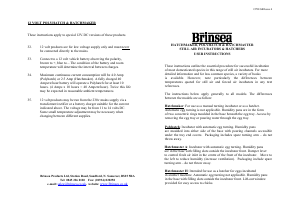

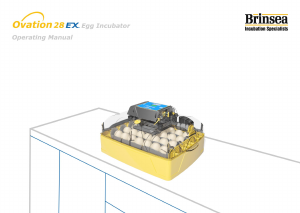
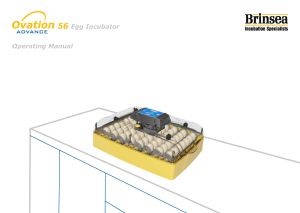
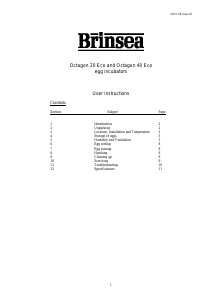
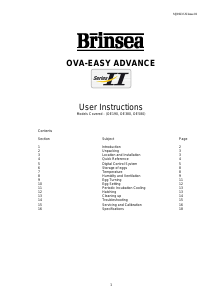

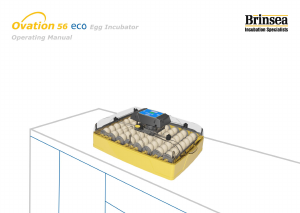

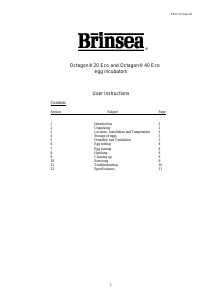
Join the conversation about this product
Here you can share what you think about the Brinsea Polyhatch Incubator. If you have a question, first carefully read the manual. Requesting a manual can be done by using our contact form.
reply | This was helpful (1)